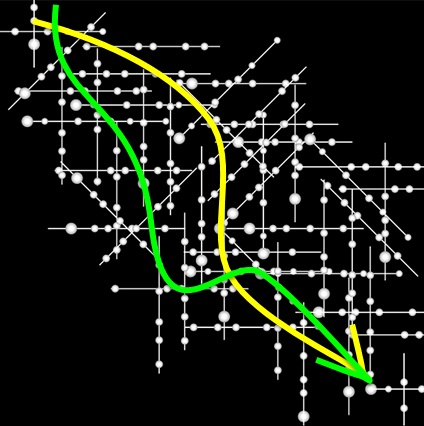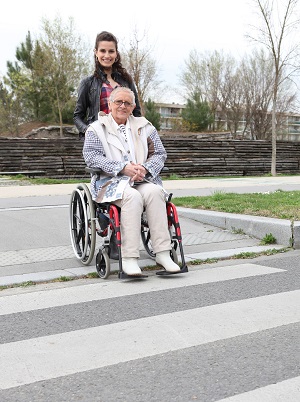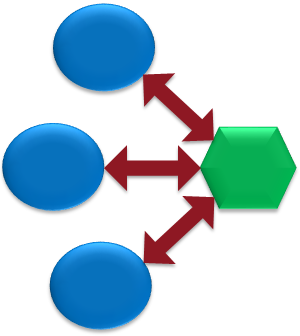25 Feb Discrimination, Association and Recognition
 Discrimination
Discrimination
Although discrimination has negative connotations, we do it every millisecond. We must discriminate between distractions and important information we see and hear. The environment is filled with ambient noise, sometimes so much so as to prevent understanding. Once we have filtered out the noise through discrimination, we must further discriminate between incorrect and correct interpretations of the input. Wikia Psychology’s page on Discrimination has a great set of references, especially on discrimination in language understanding. Decline in our ability to discriminate aromas is a predictor of cognitive decline in elderly people.
Do you recall a time when you heard a sound for the first time, either a lovely sound or otherwise, and thought: “What was that?” Yorrick, our volunteer subject infant, hears brand new sound stimuli all the time. Throughout his infancy and into his toddling years, he is unable to correctly interpret most of what he hears. Imagine his joy, and his parents’ joy, when he successfully mimics a sound, especially speech. Even if he had no idea what he was doing, the fact that he was able to sort through the noise (discriminate), focus, and recognize that a sound coming out of himself matched a sound coming from elsewhere is a huge step in the learning process.
| Understanding Context Cross-Reference |
|---|
| Click on these Links to other posts and glossary/bibliography references |
|
|
|
| Prior Post | Next Post |
| Neural Network Perception | Physiology of Learning to Generalize |
| Definitions | References |
| discriminate filtering | Wikia on Discrimination |
| recognition learning | On the Soul – Aristotle |
| consciousness subconscious | Hawkins 2004 |
| algorithm ontology | Sohrabi et al 2012 |
 The feature selective cells are in the initial layers of the visual association pathways at the back of the brain. While the visual cortex is receiving and sorting out visual signals, other areas of the brain are receiving other input and correlating that input with the contextual information stored in the hippocampus at the center of the brain. This correlation of context and multiple sources of input enables us to build up a set of expectations that expedite interpretation by warming up the areas that are most likely to correctly interpret the input.
The feature selective cells are in the initial layers of the visual association pathways at the back of the brain. While the visual cortex is receiving and sorting out visual signals, other areas of the brain are receiving other input and correlating that input with the contextual information stored in the hippocampus at the center of the brain. This correlation of context and multiple sources of input enables us to build up a set of expectations that expedite interpretation by warming up the areas that are most likely to correctly interpret the input.
After the visual cortex sorts out the input patterns and filters out the visual noise, the information flows into the correlation and interpretation centers where the input is discriminated again and interpreted. This process of discrimination leads to the most basic form of interpretation: recognition.
Filtering Noise
Noise is received at the same time as information. Let’s say we’re faced with a decision of whether or not to cross a road. (How many of you just thought of a chicken? – Noise!) Noise may include tactile sensations such as cold air pebbling the skin, audio input such as a flock of noisy birds flying overhead, the aroma of a bakery, and visual input of a street lined with trees. Some of the noise may have some intrinsic data value in processing the next course of action. For example, the presence of trees may limit approaching drivers’ potential reactions. When the relation between the data elements is ascertained, the data becomes information. When the information is interpreted, and, in the case described, the potential danger is acknowledged, the information becomes meaningful and actionable; therefore, it is knowledge. Other knowledge is then used to determine courses of action (hopefully elevating the cognitive process to the level of “wisdom”).
 Here is a situation in which the following description and cause and effect observations make up salient information:
Here is a situation in which the following description and cause and effect observations make up salient information:
- I am in a crosswalk.
- The crosswalk is at an intersection.
- The intersection is uncontrolled.
- Cars are approaching rapidly.
- High speed impact hurts.
In processing the data elements described, a person may draw on previous experience to judge the various options before taking action. The possible responses could be to hurry, to continue, to stop, or to turn back. To decide among possible actions, a person must reason, often very quickly in both introspective and extrospective chains. When other people are involved, their presence may affect our decision process, making us bolder or more cautious (“wisdom” again). Furthermore, their verbal cues may prompt us toward a course of action whether or not it is consistent with our assessment. This is an example where thinking becomes a social phenomenon, and consciousness definitely stretches beyond the physical self.
We have the mechanisms for doing such reasoning, and those mechanisms require the use of knowledge. In such a situation, we may reason about the relative distances of the two sides of the street, the relative speeds of approaching vehicles, our own ability to scoot out of the way, and the expected courses of action of the approaching drivers. We may consciously or subconsciously weigh the alternatives and choose the one that seems best. In “tight” situations, our reasoning may be very rapid and mostly unconscious or it may be based on something like common sense.
Association
Filtering out noise and discriminating between useful and useless input are very physiological. Specific areas of the brain, specific types of cells, and a likely sequence of subconscious activities precede recognition. The recognition process, then, involves associating input with stored knowledge. The description of the mind in Aristotle’s writings sounds like the subconscious brain we have been describing.
Regarding the ability to discriminate between input stimuli, Aristotle asserts, “That with which [the mind discriminates] is a sort of unity, but in the way just mentioned, i.e. as a connecting term. And the two faculties it connects, being one by analogy and numerically, are each to each as the qualities discerned are one to another” (On the Soul , Book III, Chapter 7).
 In his treatise “On the Soul”, Aristotle points to associationist ideas that are reflected in modern connectionist and pattern-based reasoning theories: “It was a good idea to call the soul ‘the place of forms’, though (1) this description holds only of the intellective soul, and (2) even this is the forms only potentially, not actually” (Book III, Chapter 4).
In his treatise “On the Soul”, Aristotle points to associationist ideas that are reflected in modern connectionist and pattern-based reasoning theories: “It was a good idea to call the soul ‘the place of forms’, though (1) this description holds only of the intellective soul, and (2) even this is the forms only potentially, not actually” (Book III, Chapter 4).
When Aristotle describes the soul (the mind) as the place of forms, he describes a pattern-based associationist model of cognition that enables us to discriminate between input stimuli. The discrimination and association process involves the following sequential steps:
- Perception
- Filtering
- Correlation
- Association
- Recognition
The steps of Filtering and Correlation contribute to the process of discrimination. Association follows perception, contributes to filtering and correlation, and is an important component of recognition. You might even say that there are multiple layers of association: micro-association in the early microseconds of understanding input, then increasingly macro-association as spreading activation becomes coherent thought. This progression guides modeling of fuzzy association algorithms using ontological knowledge.
| Click below to look in each Understanding Context section |
|---|
| Intro | Context | 1 | Brains | 2 | Neurons | 3 | Neural Networks |
| 4 | Perception and Cognition | 5 | Fuzzy Logic | 6 | Language and Dialog | 7 | Cybernetic Models |
| 8 | Apps and Processes | 9 | The End of Code | Glossary | Bibliography |








